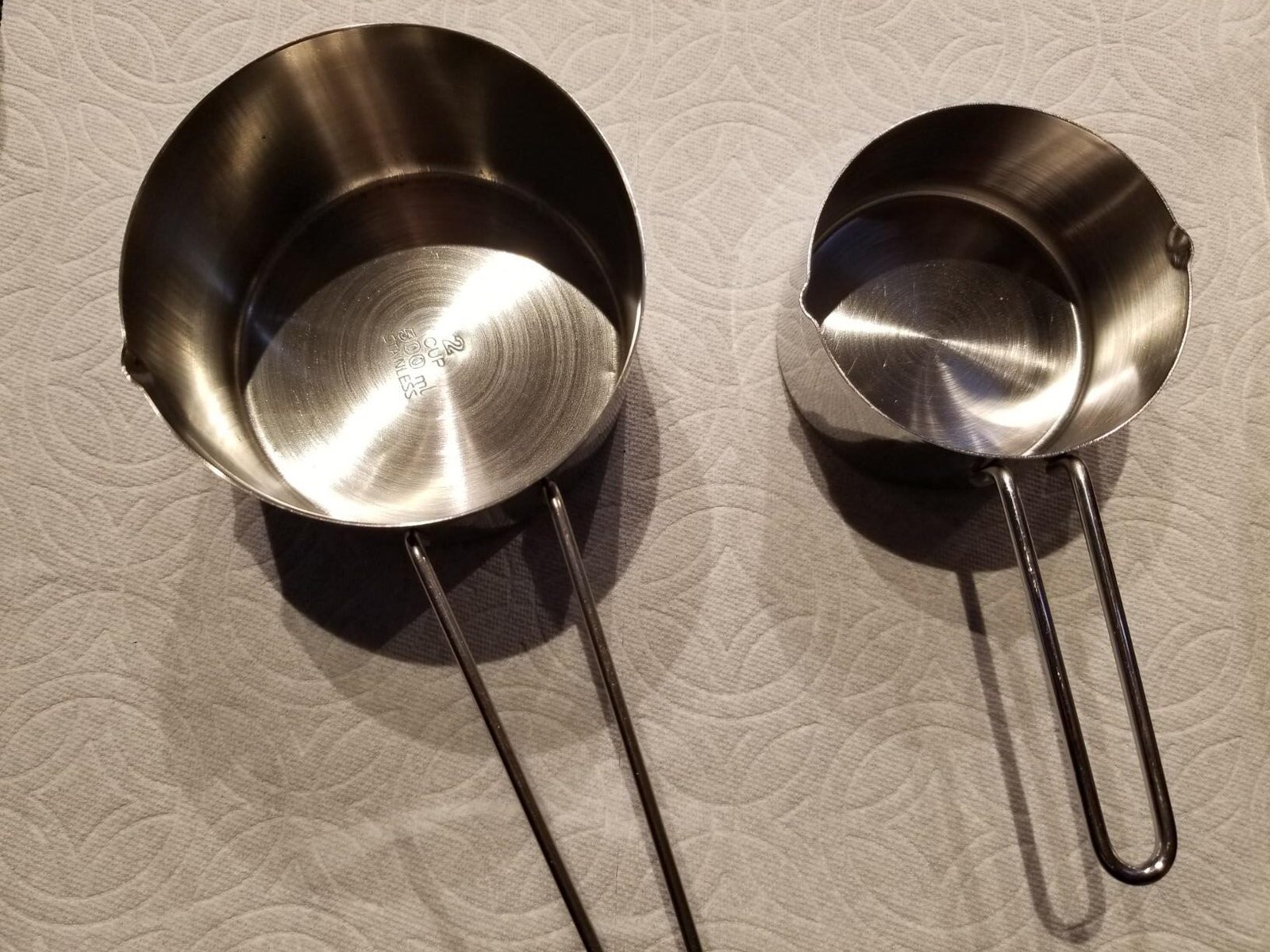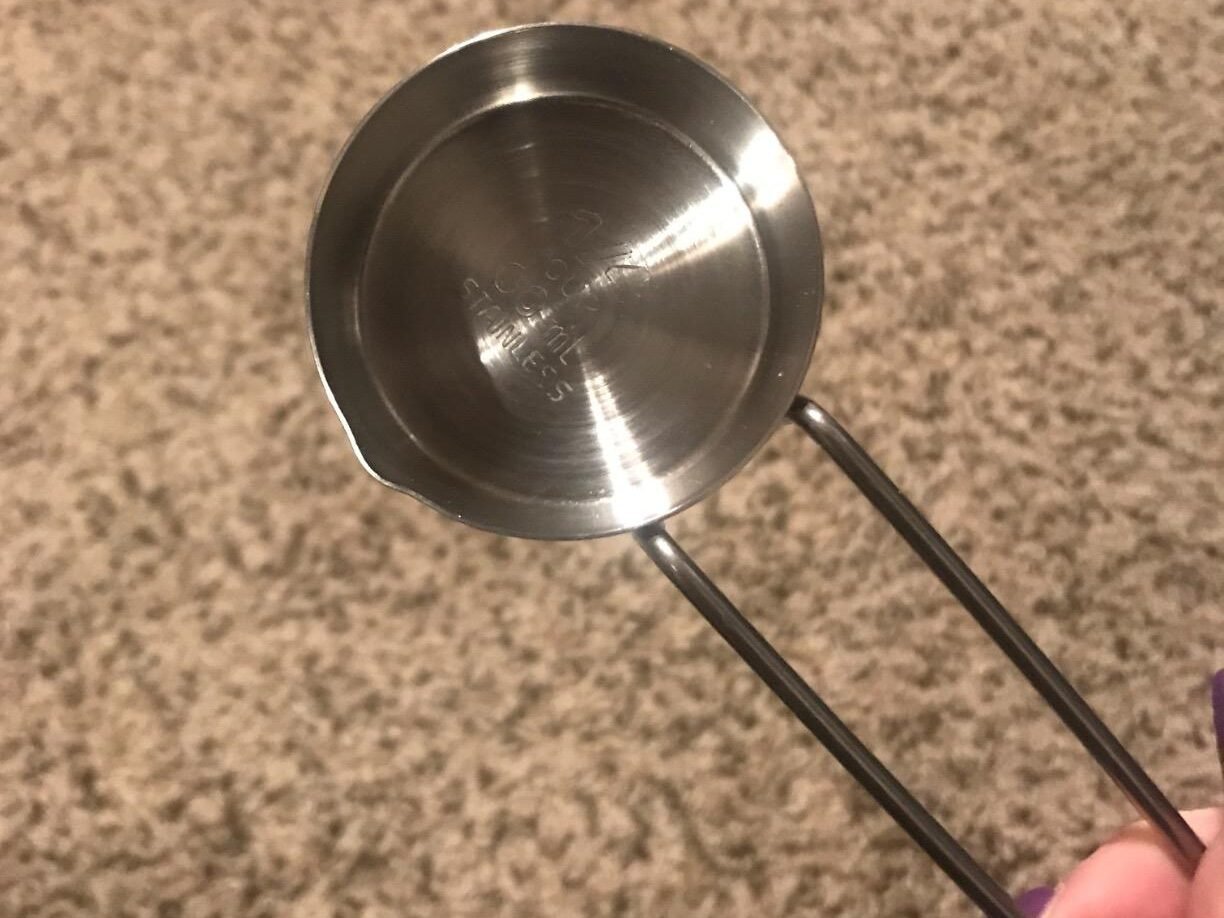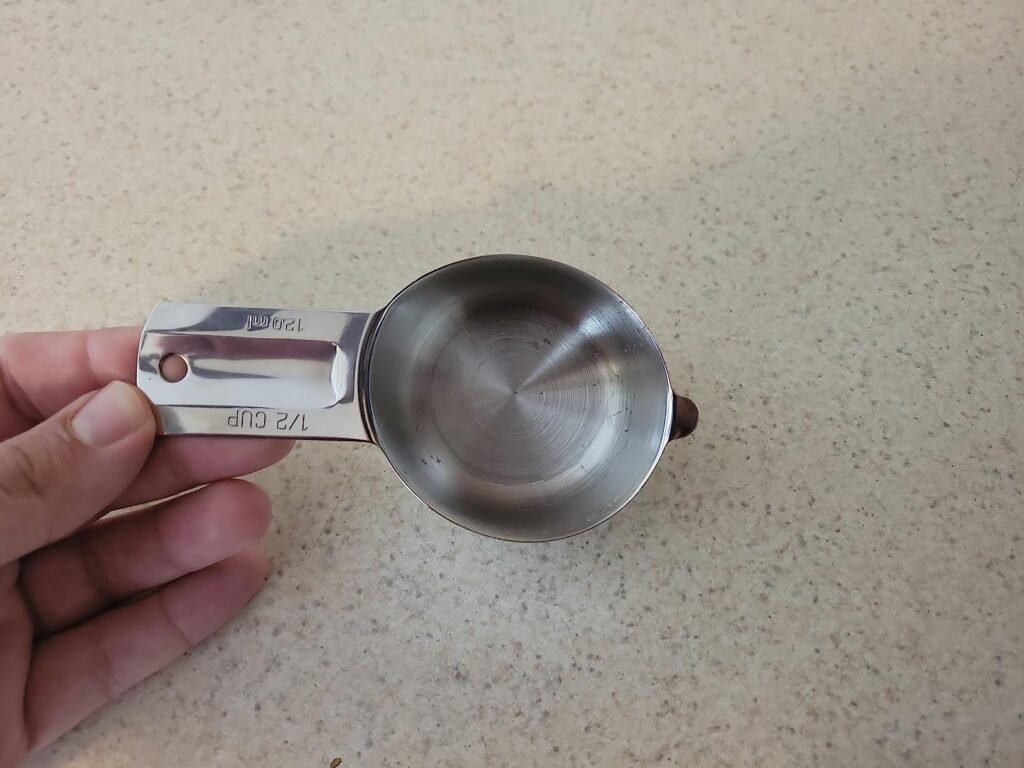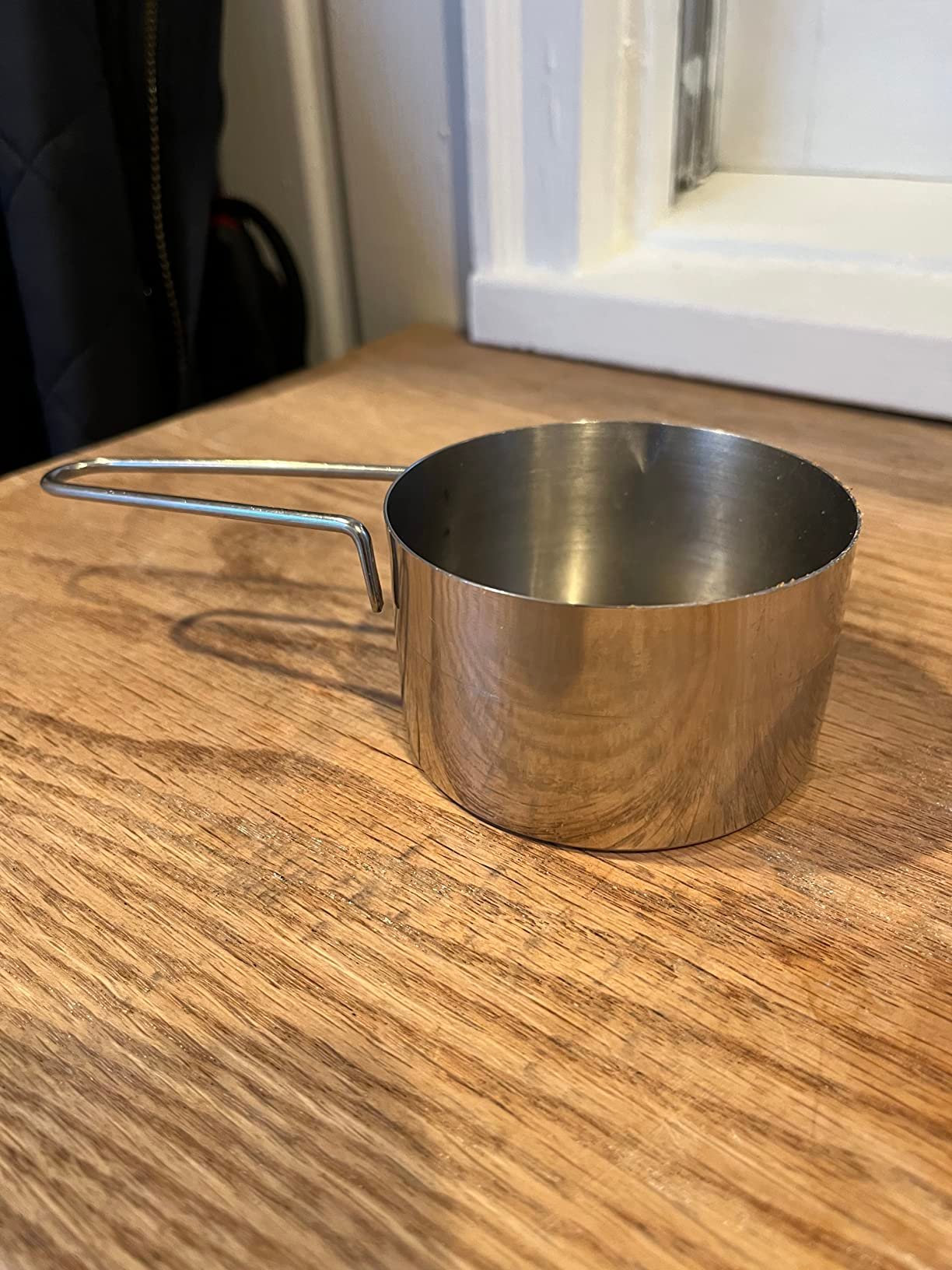How to make 1/4 cup with measuring cups: Mastering the Art; and a complete guide
Are you immersed in a recipe, eager to unleash your creative side and only to discover the elusive “1/4 cup” measurement? Be assured culinary researchers!
Accurately measuring ingredients, particularly with those seemingly bizarre parts, can be an obstacle course in the kitchen. However, don’t worry as we take you on a quest to master the art of measuring 1/4 cup!
This guide will provide you with the information and methods to accurately measure 1/4 cup, regardless of whether you’re a professional cook or just beginning your culinary journey.
We’ll discuss the importance of measuring cups, consider different methods to deal with those occasions where measuring cups are playing hide-and-seek and address the question of how can you create 1/4 cup using those useful measuring tools?
So, get your whisk and sharpen your spatula and get ready to be an expert in measuring!
Visit For More Articles: smarttoolbuddy.com
Why Does 1/4 Cup Matter?
They are blueprints for great taste. Each ingredient plays a vital contribution to creating the product’s appearance and flavor and overall performance. Baking, specifically, is a craft that requires accuracy. An error in measurement could cause a huge imbalance and leave you with cakes that are more of a doorstop than pleasure.
That’s where the 1/4-cup is available. It’s a standard measurement for many ingredients including dry staples such as sugar and flour to liquid staples such as oil and milk. The correct quantity will ensure your dish emerges from the oven (or the stove) exactly how you want it to be soft, fluffy and full of flavor.

The Measuring Cup Method: Your Kitchen Ally
Measuring cups are the best when it comes to taking on the 1/4 cup problem. The majority of standard measuring cups have a variety of sizes, including the crucial 1/4 cup measurement. Learn how to master it:
- Find your 1/4 Cup Champion: Identify the cup within your set that’s labeled “1/4 c” or ” 1/4 c.” If you’re not sure, check the label for each cup.
- Dry Ingredients: Scooping Scoop: For dry ingredients such as sugar, flour or spices, lightly scoop the ingredients into the cup with the spoon. Do not pack it in and avoid making dips in the center as well. Try to create a flat surface that extends across over the entire top. Imagine making a snow-covered, flat mountain with your ingredients.
- Liquids A Gentle Pour For liquids such as milk or oil make sure to carefully pour the liquid to the glass until it is at that 1/4-cup mark. Be aware that the line must be placed at eye level to ensure precision.
- Sticky Situations? Wipe It Off If you’re measuring ingredients that are sticky, such as peanut butter or honey A quick swipe of an unwet towel can help stop them from sticking to the cup, causing incorrect measurements.
Pro Tips: For extra accuracy especially when using dry ingredients, you can fluff the container in which the ingredient is stored before putting it in the measurement cup. This will ensure that there aren’t any air pockets with the substance itself.
Related Post: measuring up mastering the art of the 1-8 cup
Alternative Measuring Methods: When the Cups Go Missing
It’s happened to us all: the recipe requires 1/4 cup of water, but the measuring cups appear to have disappeared into a kitchen black void. Don’t panic! Here are a few clever methods to measure 1/4 cup without using standard instruments:
- The Tablespoon Savior: One US tablespoon is equivalent approximately three teaspoons. There sixteen tablespoons of food in one cup 4 tablespoons equals 1/4 cup.
Conversion Table: Fractions to Tablespoons
| Fraction of a Cup | Equivalent Tablespoons |
| 1/8 cup | 2 Tbsp |
| 1/4 cup | 4 tbsp |
| 1/3 cup | 5 1/3 5 1/3 |
| 1/2 cup | 8 tbsp |
- The soup may surprise you: This method works best with dry ingredients such as rice or flour. A typical condensed soup will typically contain 10-12 pounds of liquid. Because 1 cup equals to 8 ounces, the half of a typical soup can (approximately five to six ounces) can be a suitable alternative to the measurement of 1/4 cup dry ingredient (though be aware that the accuracy may differ slightly based on the particular size of can).
- The Ruler’s Rescue: This method works best with dry ingredients like rice or flour. You will need a flat surface as well as an appropriate ruler. If you are using 1/4 of a cup measure roughly 2 by 4 inches substance. This is an approximate estimate however it could be a an effective option in a pinch. This is why: Imagine that the ingredient is the shape of a rectangular shape on a flat surface. The 2-inch measurement is the size of the rectangle while the 4-inch measurement is the length. By forming this rectangular shape in essence, you’re taking the amount in the food ingredient. It’s around 1/4 cup.

Making 1/4 Cups with Larger measuring cups A Mathematical Maneuver
Let’s say that you don’t own an individual 1/4-cup measuring cup, but you have bigger ones, like one or a half cup. Cup measurement. Don’t fret! You can still calculate an exact 1/4 cup with some basic math and the tools you already have.
Here’s how:
Scenario 1: Using a 1/2 Cup Measuring Cup
- Divide and conquer: Since 1/2 cup is equivalent to 2x 1/4 cups, you can simply fill the measuring cup 1/2 cup half with the ingredient you want to use. Imagine a line cutting the cup into two halves which is the 1/4-cup mark!
Scenario 2: Using a 1 Cup Measuring Cup
- Division Power The 1 cup equals to one fourth of a cup. Fill the measuring cup until it reaches at the the 1/4-cup mark. That will result in the ideal 1/4 cup measurement.
Be aware: For both scenarios ensure that you follow the exact scooping or pouring technique mentioned earlier regardless of the dried or liquid components.
Mastering the Art of Measurement: Beyond the 1/4 Cup
The 1/4 cup measurement is a huge accomplishment however, your newfound measuring proficiency doesn’t end there! Here are some more suggestions to make sure you measure accurately each time you enter the kitchen:
- Make sure you invest in high-quality measuring Cups: A good measuring cup set will clearly mark with a sturdy design and are available in a variety of sizes to meet your measurement requirements. You can consider nesting cups for convenient storage.
- Make Your Spoons More Level: Just like with measuring cups, you should invest in an excellent measure spoon set. They can be useful in small quantities of ingredients, specifically when recipes call for teaspoons.
- Take your time reading recipes: Pay close attention to the way in which the recipe specifies the measurements (cups, teaspoons, tablespoons and so on.) and follow them to get the best outcomes. Certain recipes may employ the weight measurement (grams) If you’re not familiar with this and want to get a kitchen scale, it can be a great purchase.
- Practice makes perfect: The more you bake and cook it’s easier you’ll get in weighing ingredients. Don’t be afraid of trying new recipes and enjoy yourself at the table!
If you follow these easy guidelines and learning the art of measuring, you’ll soon be whipping delicious recipes that have everyone asking for more (or perhaps threes!). So, when you come across that mysterious “1/4 cup” in a recipe, keep in mind that you’re a pro! Go forth and master the kitchen in confidence!
FAQs on the measurement of 1/4 cups
How Do I Measure 1/4 of a Cup?
The most precise and accurate method to measure 1/4 cup is by using an specialized measurement cup for 1/4 cups. Find the cup inside your set that is marked using “1/4 c” or ” 1/4 c.” Follow the scooping or pouring methods previously mentioned, depending on the ingredients (dry or liquid).

How to Measure 1/4 Cup Without a Measuring Cup?
Here are some creative alternatives to use if you don’t have measuring cups:
- Tablespoon Savior A US teaspoon (tbsp) is equivalent approximately three teaspoons (tsp). Because there are 16 tablespoons of food in a cup of water, the equivalent of four teaspoons is equivalent to 1/4 cup.
- Soup Can Be a Surprise (for dried ingredients): A standard condensed soup will typically hold between 10- and 12-ounces liquid. Since 1 cup equals approximately 8oz, the half-cup of normal soup container (approximately five to six ounces) is a rough estimation for 1 cup dry ingredient. Be aware that accuracy can vary.
- Ruler Help (for dry substances): Find a flat surface and a ruler. Take a measurement of about 2 inches x four inches of the dry ingredient. This is a rough estimation, but it could be used in a pinch.
What Can Make 1/4 Cup?
There isn’t one ingredient that can make 1/4 cup due to differences in density. But you can apply the above methods to convert and measure 1/4 cup with different ingredients.
What If I Don’t Have a 1/4 Cup Measuring Cup?
If you don’t own an measuring cup that measures 1/4 cup, don’t be concerned! Other methods discussed above can assist you in estimating 1/4 cup. For the most precise measurement, think about investing in measuring cups. They’re an essential appliance for any kitchen!
Related Article :
https://smarttoolbuddy.com/how-to-clean-your-mandoline-slicer
Latest Article :
https://smarttoolbuddy.com/is-acacia-wood-good-for-cutting-boards


Related Blogs
The Top 10 Best Litter Box for Multiple Cats
5 Best Dry Cat Food for Indoor Cats 2024
Affordable Bluetooth Projector for Gaming: The Best in 2024
The Best Soundbar for Music and Movies for Home Threaters
Stay Powered Up: The Best Portable Charger for iPhone 15 in 2024
The iPhone 15 Pro Max New Features: Comprehensive Features
Liquid Screen Protector vs Tempered Glass: Which is better in 2024
What is a Monkey Wrench: Complete Details
Guide to Cleaning Your Gatorade Bottle The Proper Way
How To Sharpen Garden Hoe: Real Guide to the problem
How to Use a Tack Hammer Nail it Every Time
Easy Ways on How to Clean Garden Tools at Home
Changing a Garden Cart Tire: Expert Hacks That Will Save You from $200+ in Repairs
How to Whisk Eggs: Easy Manual Techniques
Garden Fork Vs Pitchfork: Deciding Which Tool Will Meet Your Garden Needs
Conquering the Greens: How to Rake Artificial Grass
How Deep To Plant Daffodil Bulbs? A Simple Guide
How to Pick the Best Shovel for Digging in 2024
The best time to power rake your lawn
Why Your Kitchen Isn’t Complete Without an Acacia Cutting Board
How to Replace Trimmer Line in Bump Feed: Step-by-Step Guide
Perfect Make Matcha Without Whisk: The Ultimate Guide
10 Ways to Remove Snow from Driveway Without a Shovel: Innovative Snow Removal
The Ultimate Guide: How Many Wheelbarrows of Sand Per Bag of Cement
Don’t Make This Silly Mistake with Your 5 Uses of Garden Fork
Is a Spade and a Shovel the Same? Discover the Differences Here
Transform Your Garden with Stunning Garden Stake Ideas You’ll Love
The Best Home Gym Equipment you can get in 2024
The Best Home Gym Setups for Small Spaces
Shoot Like a Pro: The Best iPhone Filmmaking Kit
Are Bone Conduction Headphones Safe?